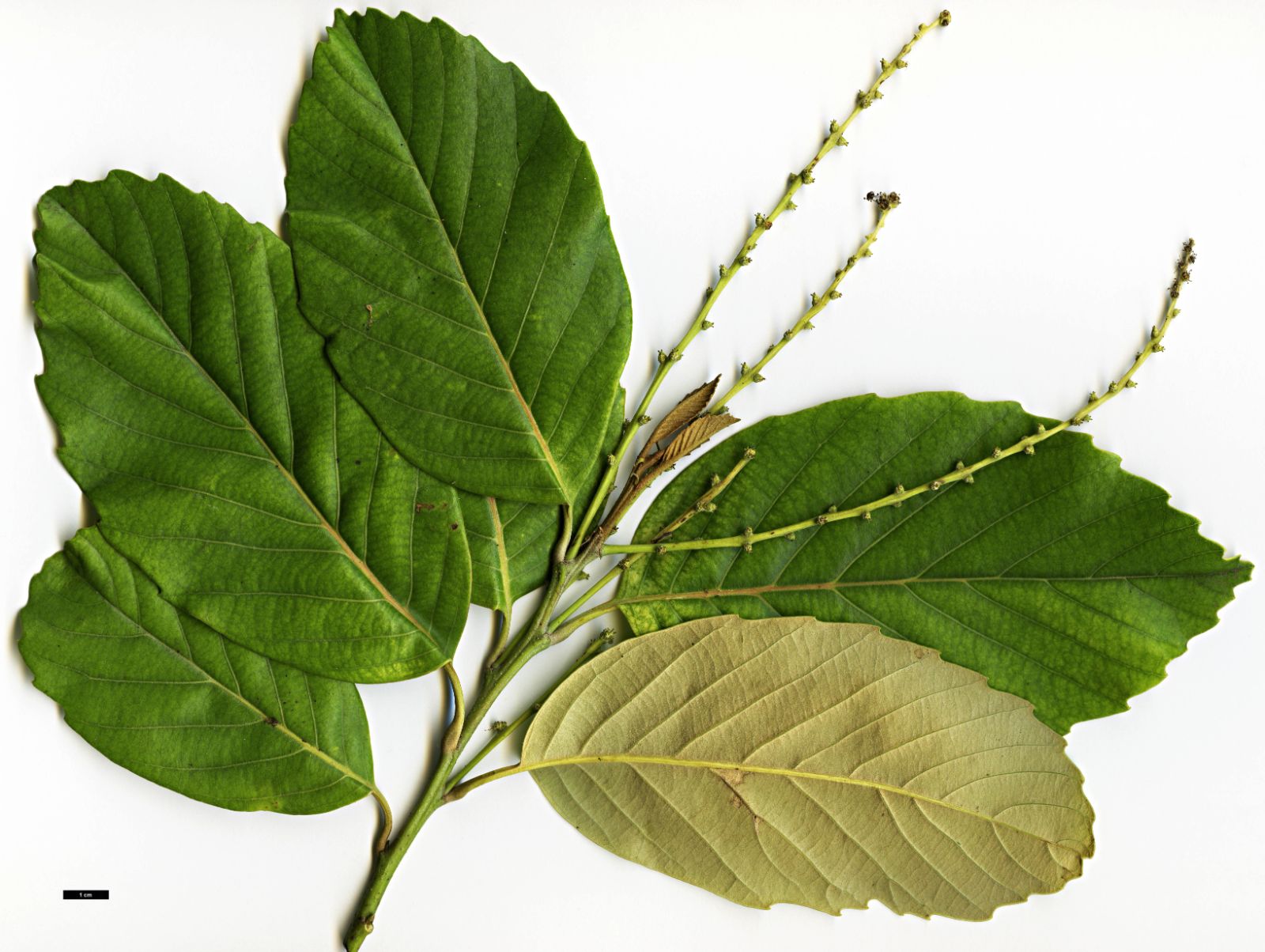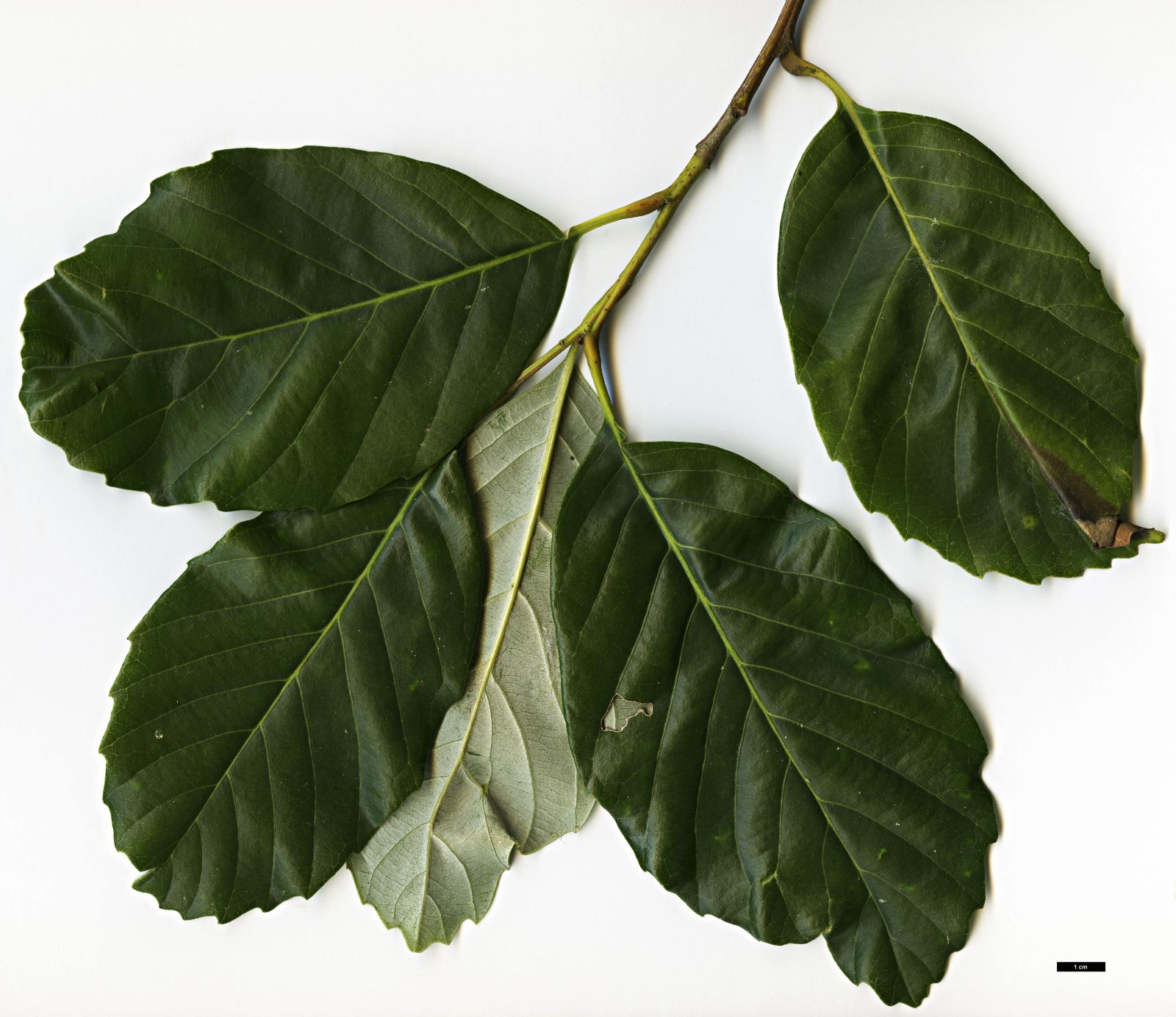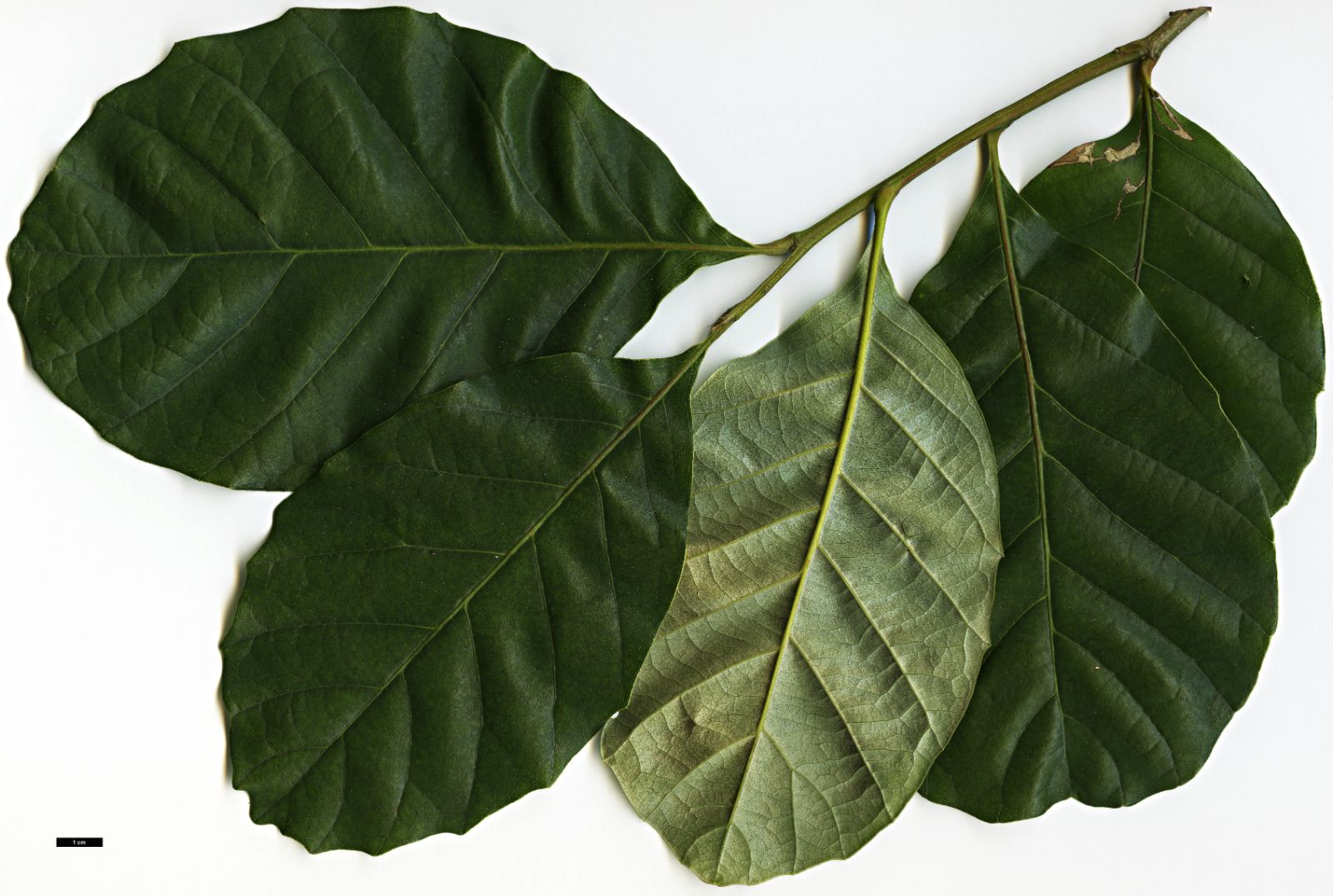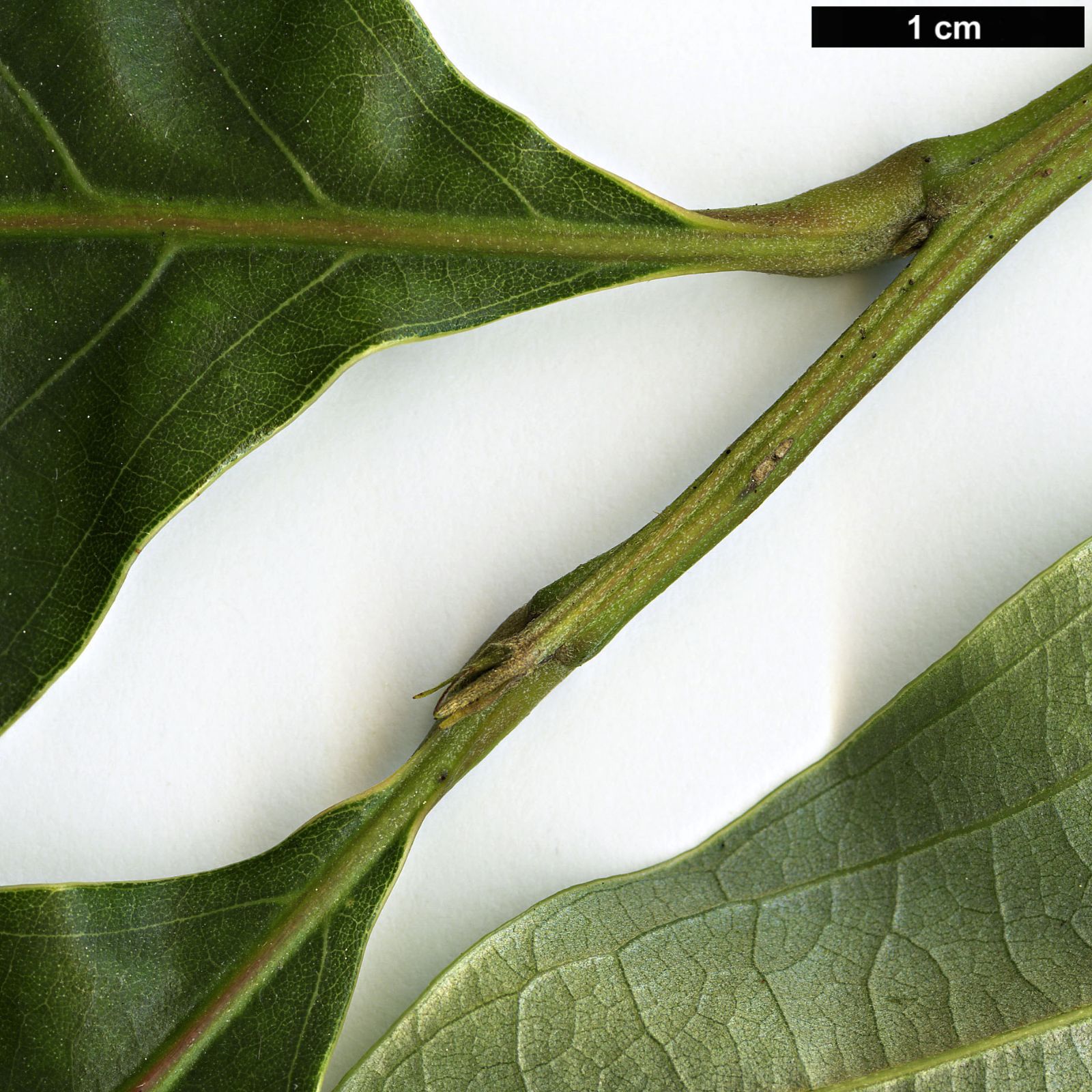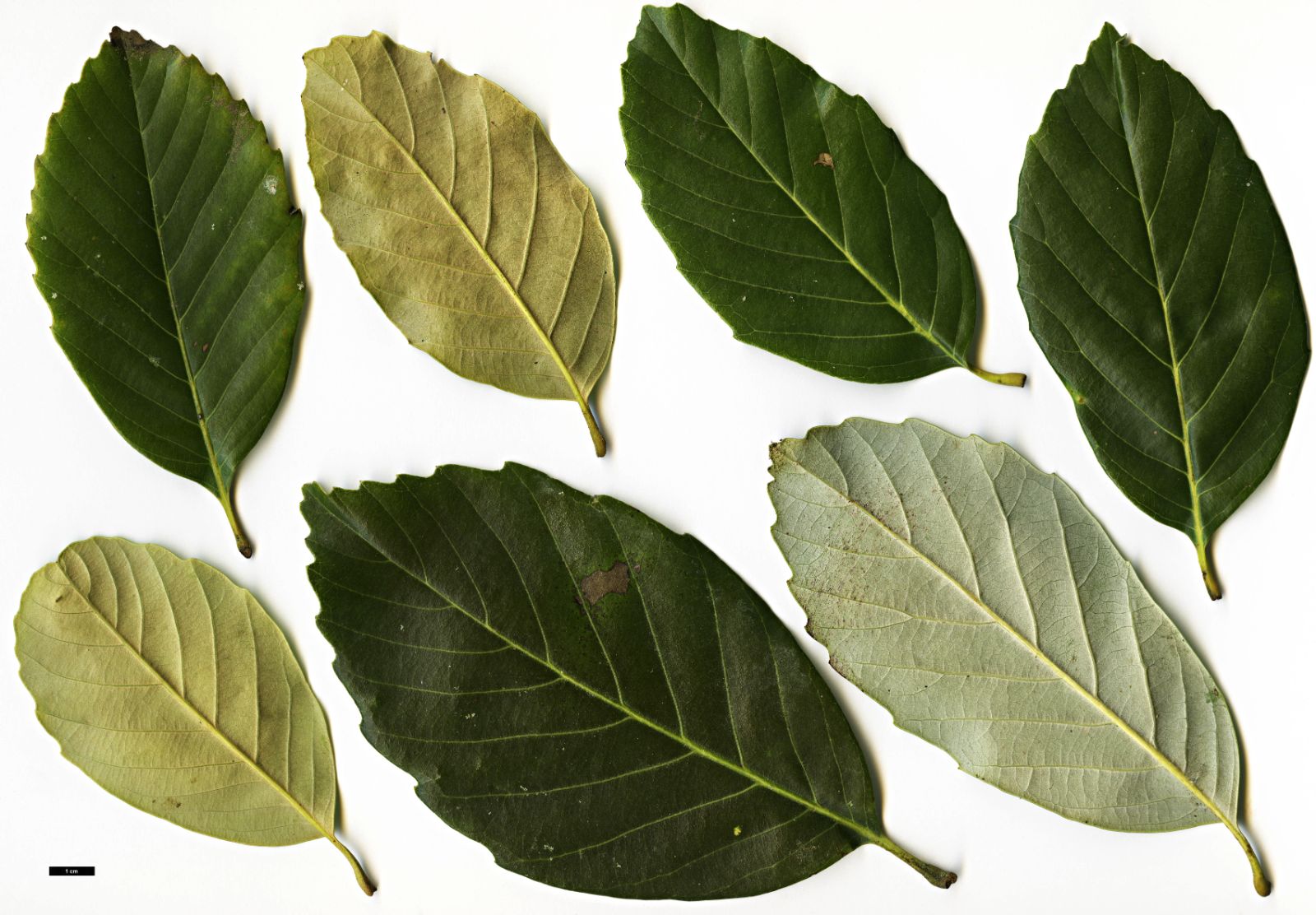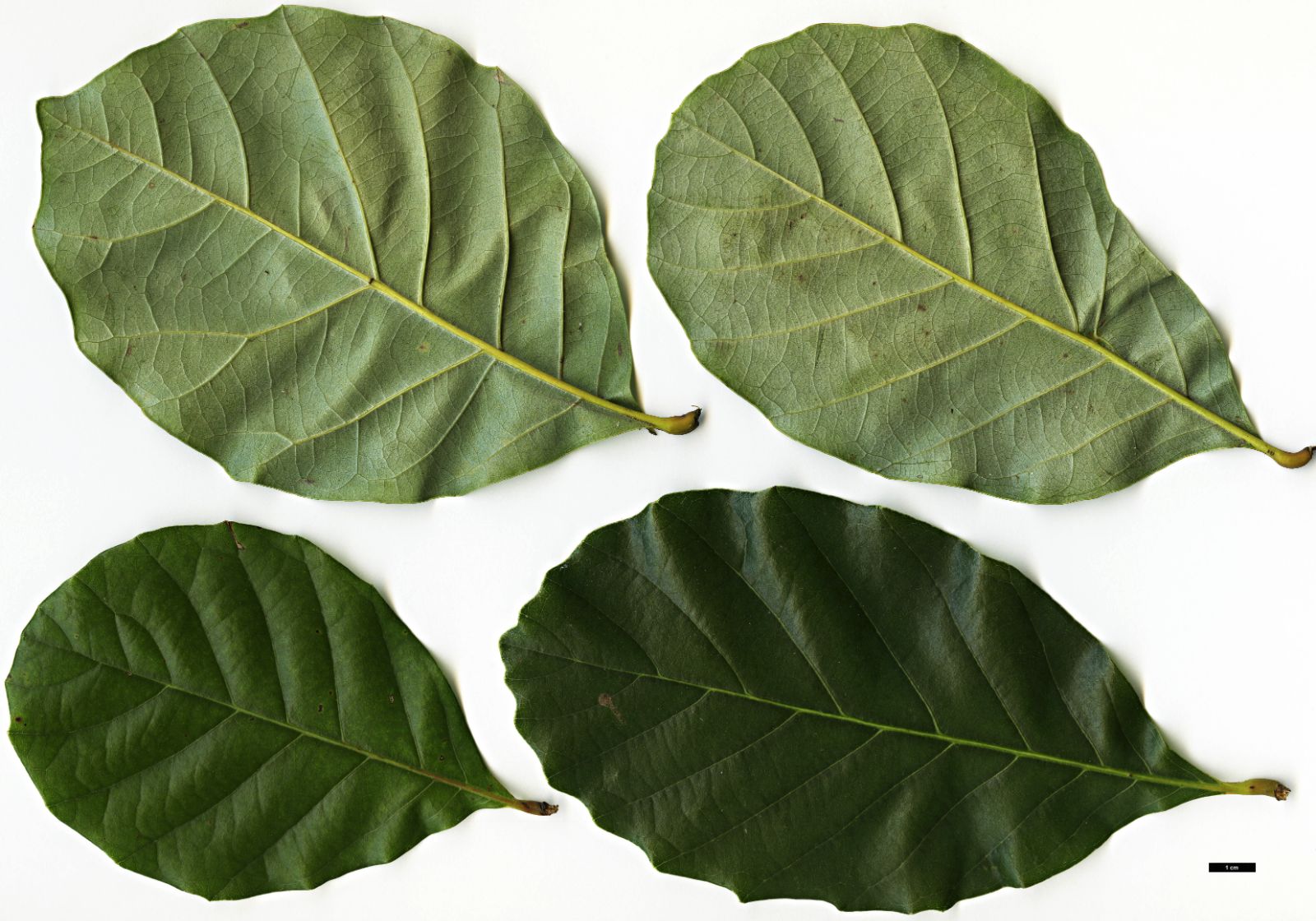Castanopsis delavayi
Credits
Article from Bean's Trees and Shrubs Hardy in the British Isles
Recommended citation
'Castanopsis delavayi' from the website Trees and Shrubs Online (treesandshrubsonline.
Genus
An evergreen tree up to 50 ft or more high in a wild state, free from down except for a sprinkling of scurfy stellate tomentum on shoot and leaf when they are quite young. Leaves stiff, leathery; elliptical, ovate or obovate; usually more or less abruptly tapered at the base; bluntish, rounded or pointed at the apex; coarsely toothed to merely wavy at the margin; 2 to 5 in. long, 11⁄4 to 3 in. wide; silvery-grey or whitish beneath; veins in six to eight pairs; stalk 1⁄4 to 1⁄2 in. long. Male flowers yellow, borne on slender erect spikes 4 or 5 in. long. Female catkins about as long, bearing stalkless fruits which, when developed, are globose, about 1⁄2 in. wide, covered with stiff short spines, and containing usually one nut.
Native of W. China; discovered in Yunnan by the Abbé Delavay; introduced by Forrest in 1924. It is in cultivation at Caerhays Castle, Cornwall.

